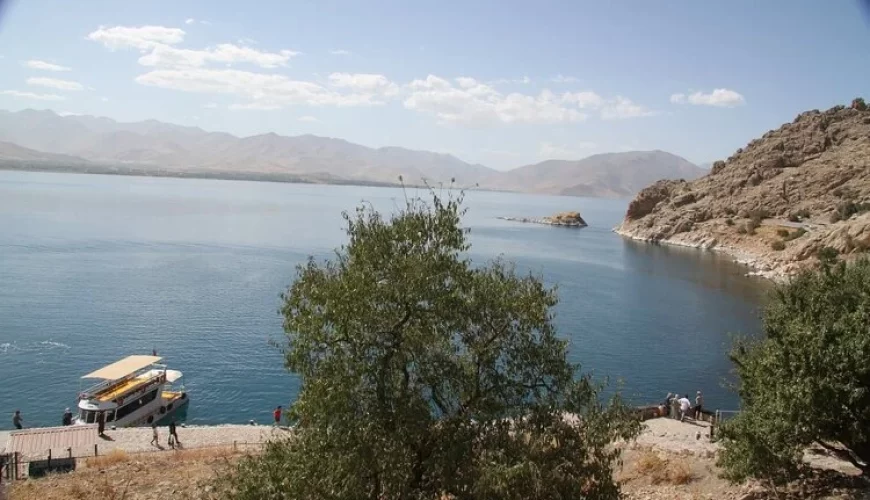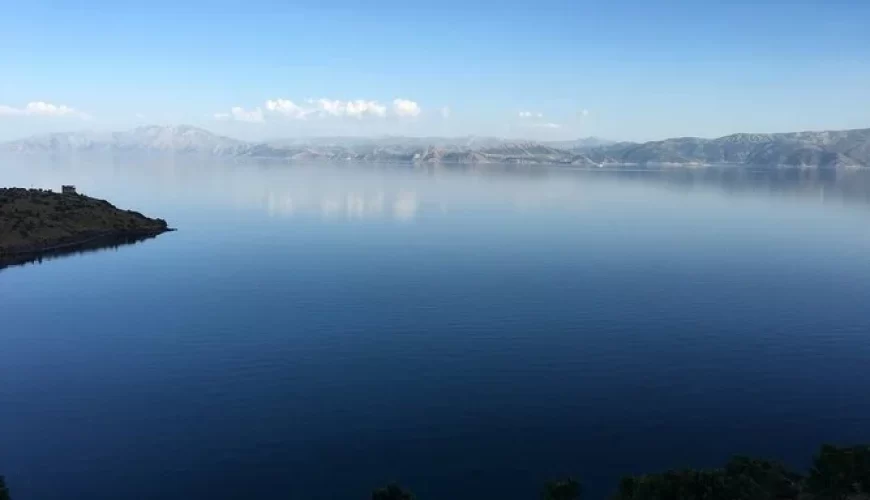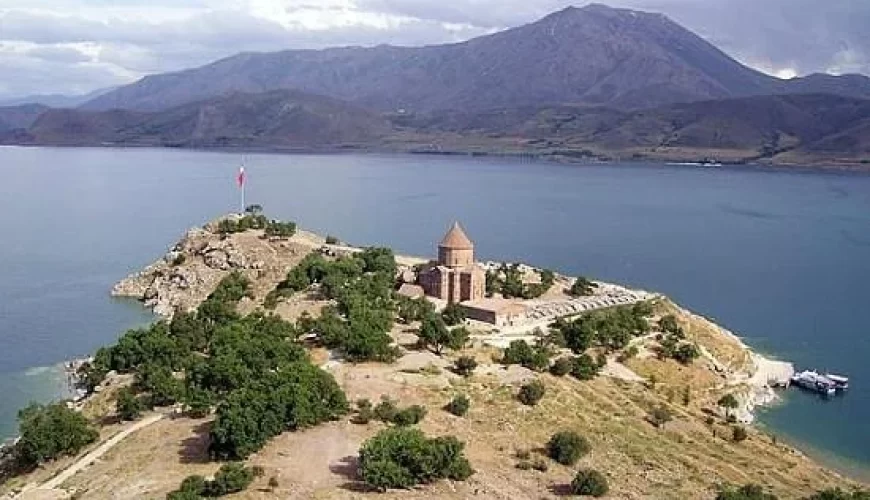Van Lake, In the times of ancient Greece it was known as Thospitis Lacus, or Arsissa Lacus, which is derived from the Urartian city of Van, or ancient Chauon. Lake Van (Van Gö lü in Turkish) is the largest lake in Turkey and the second largest in the Middle East. It’s also the biggest sodium water lake in the world. The lake lies on the high grounds of Eastern Anatolian region near the border with Iran. It was formed by a crater caused by a volcanic explosion of Nemrud mount (last eruption in 1440 AD) near the province of Van. It covers an area of 3,713 square kilometers (1,434 square miles) and is more than 119 kilometers (74 miles) across at its widest point. It’s elevation from the sea level is 1,646 meters, deepest point is 457 meters.
The water is not very suitable for drinking or irrigation because of its high salinity, and only limited species of fresh water fish (Darekh, a species of herring ) can live. The lake is fed by rainfall, melt water of ice, and small rivers. During winter months the lake has the lowest level, and rise after the spring with melting snow from surrounding mountains. The difference of level between summer and winter is about 20 inches (50 cm) per year, depending on the climate. The surrounding has the typical fauna of the region. For irrigation of the fields farmers usually use fresh water from streams feeding the lake. Pollution caused mainly by irregular drainage system of the surrounding cities and land erosion are the main threats for the lake.
Lake Van has a triangular shape and is divided into two sections; smaller and shallower northern tip, and the main body of water in the south. Northern shores are generally steep and full of cliffs and the southern shores are generally eroded plains. There are four small islands in the southern part of the lake: Akdamar, Carpanak, Adir and Kus islands. All of these islands were declared as archaeological sites in 1990. Especially Akdamar Island is a popular one amongst visitors because of a well preserved Armenian church of the Holy Cross from 10th century, it’s connected to the land by small boats’ service. Also a regular passenger boat operates between some coastal towns, and a train ferry connection from Tatvan to Van city, on the main railroad between Istanbul – Tehran.







Comment (0)